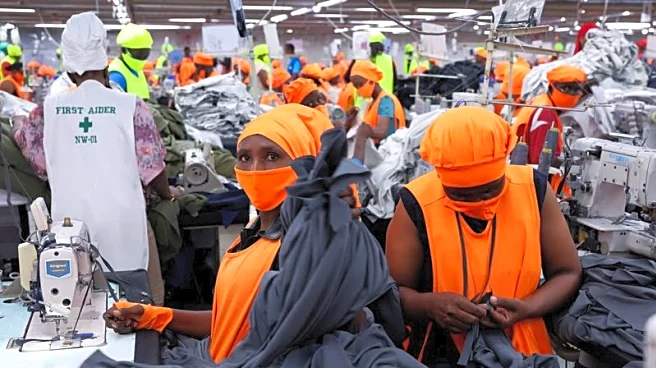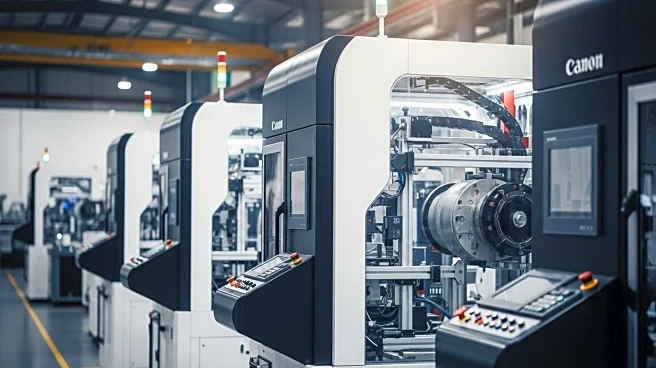What is the story about?
What's Happening?
The U.S. manufacturing sector experienced contraction in September, marking the seventh consecutive month of decline, according to the latest ISM Manufacturing PMI Report. The Manufacturing PMI registered 49.1%, a slight increase from August's 48.7%. Despite this uptick, the sector remains in contraction, with 67% of the manufacturing GDP contracting, down from 69% in August. The report highlights that only one of the six largest manufacturing industries, Petroleum & Coal Products, showed expansion. Key indices such as New Orders and Prices declined, while the Production Index saw a modest increase. Tariffs have been cited as a significant factor affecting manufacturing performance, particularly impacting high-end capital equipment orders.
Why It's Important?
The continued contraction in the U.S. manufacturing sector signals potential challenges for the broader economy, as manufacturing is a critical component of economic health. The decline in new orders and persistent contraction in key industries like Wood Products and Furniture indicates ongoing weakness. This situation could lead to reduced employment opportunities and impact related industries. The influence of tariffs suggests that trade policies are significantly affecting manufacturing, potentially leading to strategic shifts in sourcing and production. The mixed performance across different indices highlights the sector's vulnerability to external economic pressures.
What's Next?
The manufacturing sector's future performance will likely depend on changes in trade policies and global economic conditions. If tariffs remain, industries may continue to face challenges, potentially leading to further contraction. Companies might need to adjust their strategies, focusing on efficiency and cost management. Monitoring upcoming economic indicators and policy changes will be crucial for stakeholders to anticipate shifts in the manufacturing landscape. The sector's ability to rebound will depend on stabilizing new orders and managing input costs effectively.
Beyond the Headlines
The ongoing contraction in manufacturing raises questions about the long-term sustainability of current trade policies and their impact on U.S. competitiveness. The sector's struggles could prompt discussions on policy adjustments to support domestic manufacturing. Additionally, the emphasis on tariffs highlights the need for industries to diversify supply chains and explore new markets to mitigate risks. The sector's performance could also influence political discourse, particularly in regions heavily reliant on manufacturing jobs.
AI Generated Content
Do you find this article useful?














